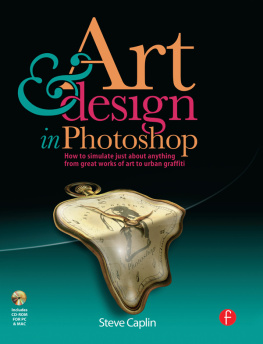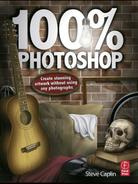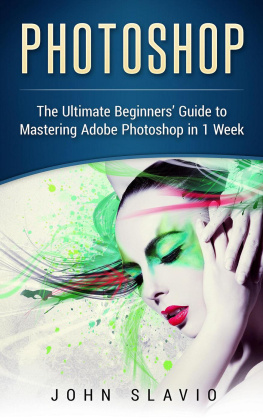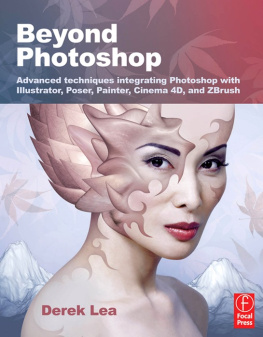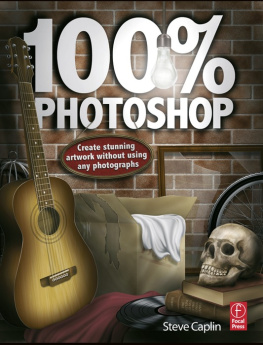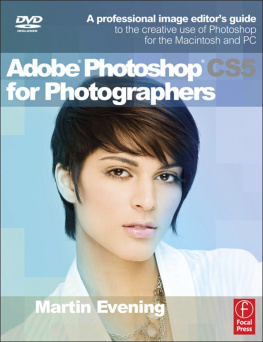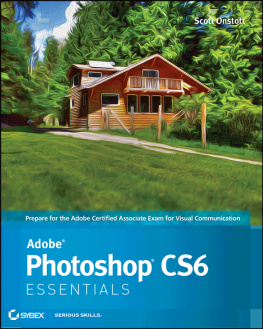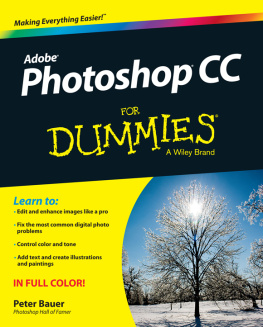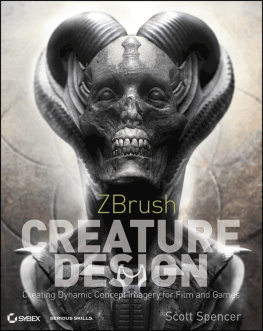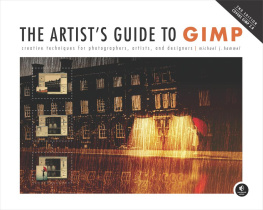Introduction
THERE ARE MANY books that will teach you how to use Photoshop. This isnt one of them.
Throughout all the editions of How to Cheat in Photoshop a book which will, incidentally, teach you how to use Photoshop Ive maintained a website and reader forum to help readers with their photomontage-related problems. This has included a regular weekly contest, the Friday Challenge. And Ive noticed that one of the major issues facing Photoshop artists is not how to use the Curves dialog, or the Pen tool, or how to save work for the web. One of the major stumbling blocks, it turns out, is the design process.
There are several areas of difficulty. Typography has been a particular problem: with so many dozens of fonts shipping with every new computer, and with thousands more available through the internet, how are we to select one thats appropriate for the task were working on? Is there more to choosing the right font than merely picking one that stands out on screen, or which happens to appeal to us? Of course there is, which is why Ive devoted a chapter to explaining how typography works, and how to make it work in your favor.
There are several different visual arts disciplines, and each has its own set of conventions and received wisdom. Art students will be familiar with the laws of perspective and the notion of balance; photographers will recognize the Rule of Thirds, and how movement must flow from the edge of an image towards the center; designers will understand how to lay out a page that incorporates white space and visual elements to break up the text, and how to draw the readers eye through a layout.
At this point, I have a confession to make. I didnt go to art school. Im not a trained photographer, or an accredited designer. (When pressed, I tend to refer to myself as an unqualified success.) All the rules that I suggest in this book are those Ive figured out through years of trial and error, of creating montages and then wondering why they dont look as good as they should do. Only later, in some cases, have I found that theres a perfectly good rational explanation for why some compositions work and others dont, and when this is the case Ive tried to phrase the explanations in a way thats meaningful to photomontage artists.
Of course, not all of this book is on a purely theoretical level. After a couple of chapters in which we explore the basic principles of typography and design, we roll up our sleeves and get down to the work of examining individual design concepts, to see how theyre put together. Well explore the fields of art and commerce, of packaging and advertising, to see what works and what fails to make the grade.
While the main theme of this book is the intrinsic design ideals that underlie each topic, we will of course show how you can achieve the effects yourself. This book isnt designed for you to reproduce the examples Ive created, but rather for you to see the principles in action so you can go on to produce your own better, more original designs. Its not a cookbook, so much as a spare parts catalog.
At the back of the book youll find a Photoshop Reference section. Its referred to several times within the tutorials; use it to brush up your Photoshop knowledge on specific points.
Of course, any Photoshop artist will occasionally struggle with some sticking point in the application itself. And so Id like to invite all readers of this book to visit the Reader Forum at www.howtocheatinphotoshop.com where you can ask questions, exchange ideas and show off your work. If you have any difficulties with Photoshop techniques, or with tutorials in this book, post a message there and I (or another reader, if they get in first) will do my best to help you out the same day.
Steve Caplin
London, 2008
This book is dedicated to Carol, of course.
I'm grateful to the following:
Ben Denne and Hayley Salter of Focal Press
Keith Martin, for helping create the keyboard shortcuts font
MacUser magazine, for allowing me to repurpose some of my artwork
Adobe Systems Inc., for making Photoshop in the first place
The type designers Ray Larabie, Dieter Steffmann, Manfred Klein, Christophe Feray,Andrew Leman, Paul Lloyd, Graham Meade, Pat Snyder, Julius B. Thyssen, Walter Velez andBen Weiner for so generously creating their outstanding fonts and making them freelyavailable to designers.
Some of the images in this book are from Wikimedia Commons, part of Wikipedia. Someare images I've photographed myself. The remainder are taken from the best subscriptionsite I know: www.photos.com. With a huge range of royalty-free photographs available forinstant download, both cutout objects with clipping paths and full frame images, it's alwaysmy first stop when I'm looking for the perfect image. Many thanks to them for allowing meto include low resolution versions of some of their outstanding pictures in the tutorials inthis book. On the CD you'll find a link to the photos.com home page, and a special offer fora discount membership.
How to use this book
THIS BOOK ASSUMES that you have a fair working knowledge of Photoshop. It's beyond the scope of this book to teach readers how to use the Pen tool, or the Curves adjustment, or Layer Masks. That's what How to Cheat in Photoshop is for. But just in case any readers come across a wholly unfamiliar concept, there's a crash course in Photoshop basics at the end of the book: the final chapter, Photoshop reference, outlines some of the most common tools and techniques.
Some Photoshop tutorials, both in print and on the internet, will specify precisely what you have to do, step by step. I tend to avoid including numerical values wherever possible: rather than telling you to apply a 6-pixel bevel with a depth of 65, for example, I'll ask you to adjust the bevel until it looks right. The purpose of this book is not to get you to recreate the examples on these pages, but to help you to understand the principles so that you can then apply them to your own work. So I make no apologies for being a little vague at times. This is deliberate, and it's in order that you can work the details out for yourself

